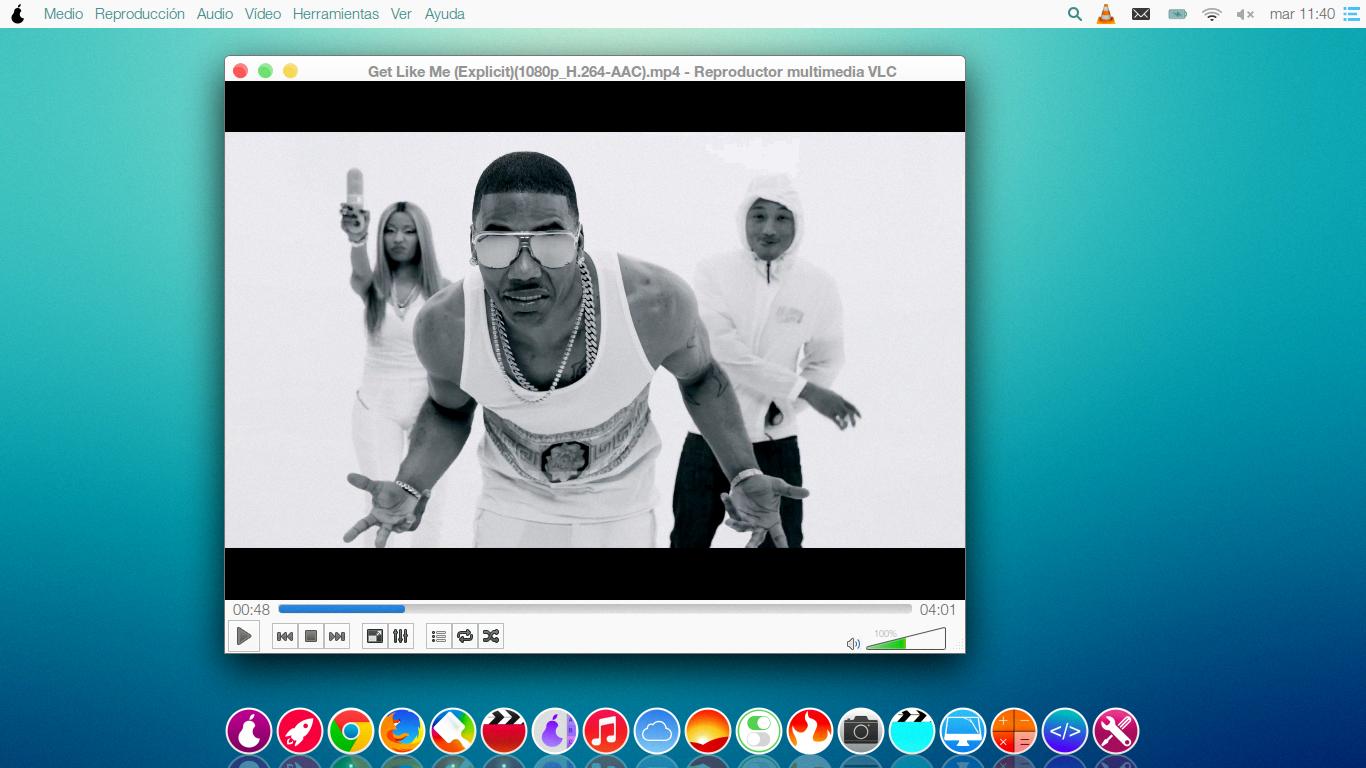IOS and Linux are two distinct operating systems with different origins and characteristics. While Linux is an open-source operating system, iOS is a proprietary system developed exclusively for Apple devices. In this article, we will delve into the details of each operating system and explore their similarities and differences.
Let’s start with Linux. Linux is a Unix-like operating system that was initially developed by Linus Torvalds in 1991. It is open-source, meaning that its source code is freely available and can be modified and distributed by anyone. This has led to a vibrant community of developers who contribute to its ongoing development and improvement. Linux is known for its stability, security, and flexibility, making it a popular choice for servers, supercomputers, and embedded systems.
On the other hand, iOS is a closed-source operating system created by Apple specifically for their mobile devices, such as iPhones and iPads. It is based on the Darwin operating system, which itself is derived from BSD UNIX. Unlike Linux, iOS is proprietary and tightly controlled by Apple. This means that only Apple devices can run iOS, and users have limited customization options compared to Linux.
One of the key differences between Linux and iOS is the level of customization and control they offer to users. Linux provides users with the freedom to modify and tailor their operating system to suit their needs. With its open-source nature, users can access the source code, make changes, and even create their own distributions. This flexibility has made Linux a favorite among tech enthusiasts and developers.
In contrast, iOS is designed to provide a more streamlined and consistent user experience across Apple devices. Apple tightly controls the software and hardware aspects of iOS, ensuring a high level of performance and security. While this closed ecosystem limits customization options, it also results in a seamless integration between hardware and software, offering a user-friendly and reliable experience.
Another notable difference is the availability of applications. Linux has a vast repository of open-source software, providing users with a wide range of applications and tools. Additionally, Linux users can run many Windows applications through compatibility layers or virtualization software. On the other hand, iOS has its own App Store, which offers a curated selection of applications specifically designed for Apple devices. While the App Store offers a large number of high-quality applications, it is more restrictive compared to the open nature of Linux.
In terms of security, both operating systems have their strengths. Linux, known for its robust security features, benefits from the collective efforts of the open-source community to identify and fix vulnerabilities. On the other hand, iOS benefits from Apple’s strict control over its ecosystem, ensuring that apps go through a rigorous review process before being available on the App Store. This closed nature helps mitigate the risk of malware and other security threats.
While both Linux and iOS are operating systems, they differ significantly in terms of their origins, customization options, application availability, and security measures. Linux offers a more open and customizable experience, while iOS provides a seamless and controlled environment. Ultimately, the choice between the two depends on individual preferences, device compatibility, and specific use cases.
Is IOS Based On Unix Or Linux?
IOS is based on Unix, specifically the Darwin operating system. Darwin, in turn, is based on BSD Unix, a variant of the Unix operating system. BSD Unix is known for its stability, security, and extensive networking capabilities. It has been widely used in various computing systems, including servers, workstations, and embedded devices.
To provide a bit more context, here are some key points about the relationship between iOS, Darwin, and Unix:
1. Darwin: Darwin is the core operating system that forms the foundation of both macOS (formerly OS X) and iOS. It is an open-source operating system developed by Apple and based on BSD Unix. Darwin provides the low-level functionalities, such as process management, file systems, and device drivers, on which both macOS and iOS are built.
2. BSD Unix: BSD (Berkeley Software Distribution) is a Unix-like operating system derived from the original Unix code developed at the University of California, Berkeley. BSD Unix has a long history of development and has been widely adopted in various forms, including FreeBSD, OpenBSD, and NetBSD. Darwin incorporated the BSD Unix codebase, making it a Unix-like operating system.
3. iOS: iOS is a proprietary mobile operating system developed by Apple exclusively for their devices, including iPhones, iPads, and iPod Touch. While iOS is based on Darwin, it is important to note that iOS is not a traditional Unix or Linux distribution. Apple has heavily modified and customized Darwin to create the iOS platform, tailoring it specifically for mobile devices with features like touch-based interfaces and app-centric workflows.
IOS is based on Darwin, which itself is based on BSD Unix. While iOS shares some similarities with Unix in terms of its underlying architecture and foundation, it is a distinct and customized operating system designed specifically for Apple’s mobile devices.

Is IOS A Type Of Linux?
IOS is not a type of Linux. While both iOS and Linux are operating systems, they have significant differences in terms of their architecture, design, and usage. Here are some key points to consider:
1. Architecture:
– Linux: Linux is an open-source operating system based on the Unix operating system. It is designed to be versatile and customizable, and it runs on a wide range of hardware platforms, including desktops, servers, smartphones, and embedded devices.
– iOS: iOS is a closed-source operating system developed by Apple exclusively for their devices, such as iPhones, iPads, and iPods. It is based on the Darwin operating system, which is also derived from Unix.
2. User Interface:
– Linux: Linux offers a variety of desktop environments, such as GNOME, KDE, and XFCE, which provide different user interfaces. Users have the flexibility to customize their interface according to their preferences.
– iOS: iOS has a unique and consistent user interface across all its devices, featuring a touch-based interface with icons, gestures, and a centralized app store.
3. App Ecosystem:
– Linux: Linux has a wide range of open-source software available through package managers like apt or yum. However, the availability of proprietary commercial applications is relatively limited.
– iOS: iOS has a vast app ecosystem through the Apple App Store, offering millions of applications developed specifically for iOS devices. The App Store provides strict guidelines and quality control for app submissions.
4. Device Compatibility:
– Linux: Linux can run on various hardware architectures, including x86, ARM, and PowerPC. It is highly adaptable and can be installed on desktops, servers, smartphones, embedded systems, and even supercomputers.
– iOS: iOS is specifically designed to run on Apple’s devices, including iPhones, iPads, and iPods. It is optimized for Apple’s hardware and cannot be installed on non-Apple devices.
5. Distribution and Updates:
– Linux: Linux is available in various distributions like Ubuntu, Fedora, Debian, and CentOS. Each distribution provides its own package management system, updates, and community support.
– iOS: iOS updates and distribution are controlled by Apple. Users receive updates directly from Apple, ensuring a consistent experience and security across all iOS devices.
While both Linux and iOS are operating systems, they have distinct differences in terms of architecture, user interface, app ecosystem, device compatibility, and distribution. Linux is open-source and versatile, running on a wide range of hardware, while iOS is a closed-source operating system designed exclusively for Apple devices.
Is Apple OS Linux Based?
Apple’s operating system (OS), known as macOS, is not based on Linux. macOS is built on a different Unix-based kernel called Darwin, which is open-source and derived from BSD Unix. However, it’s important to note that while the kernel is open-source, the other components of macOS, such as the graphical user interface (GUI) and core applications, are closed-source and proprietary to Apple.
To summarize:
– macOS is not Linux-based but is built on a Unix-based kernel called Darwin.
– Darwin is open-source and derived from BSD Unix.
– The GUI and core applications of macOS are closed-source and proprietary to Apple.
Here is a bulleted summary for quick reference:
– Apple’s macOS is not Linux-based.
– macOS is built on the Darwin kernel, which is open-source and derived from BSD Unix.
– The GUI and core applications of macOS are closed-source and proprietary to Apple.
Is IOS Based Off Android?
IOS is not based off Android. iOS is the operating system developed by Apple specifically for their iPhones, while Android is a separate operating system developed by Google. Although both operating systems are used in smartphones, they are built on different foundations and have distinct features and functionalities.
Here are some key points to consider:
1. Origin: iOS was first introduced in 2007 with the release of the original iPhone. It is a proprietary operating system developed exclusively for Apple’s devices. On the other hand, Android was developed by Google and released in 2008 as an open-source operating system for various smartphones.
2. Foundation: iOS is built on a foundation known as Darwin, which is a Unix-like operating system. It incorporates Apple’s unique design and features, including a closed ecosystem where only approved apps can be installed. Android, on the other hand, is based on the Linux kernel, an earlier open-source operating system model. This allows for greater customization and flexibility for device manufacturers and developers.
3. App Store: iOS has its own dedicated App Store, which is tightly controlled by Apple. All apps undergo a strict review process before they are made available for download. Android, on the other hand, has the Google Play Store, which is also curated but offers more flexibility for developers to distribute their apps through alternative stores or directly to users.
4. Interface and Features: iOS and Android have different user interfaces and design philosophies. iOS is known for its sleek and minimalist design, with a focus on simplicity and ease of use. Android offers more customization options and allows users to personalize their devices to a greater extent.
5. Ecosystem: iOS is closely integrated with other Apple products and services, such as iCloud, iTunes, and Apple Music. This tight integration allows for seamless synchronization and sharing of data across devices. Android, being an open-source platform, can be used by various device manufacturers and offers compatibility with a wide range of services and apps.
It is important to note that while both iOS and Android have their own strengths and weaknesses, they are distinct operating systems with different origins and design principles.
Conclusion
IOS and Linux are two distinct operating systems with different origins and characteristics. iOS is a proprietary mobile operating system developed by Apple exclusively for their devices. It is not based on Linux, but rather evolved from an earlier Apple operating system known as Darwin, which is based on the BSD Unix kernel. iOS is closed-source and can only be installed on Apple equipment.
On the other hand, Linux is an open-source operating system that was initially developed as a free alternative to Unix. It has a large community of developers who contribute to its ongoing development and improvement. Linux is versatile and can be installed on various hardware platforms, including smartphones, computers, and servers.
While both iOS and Linux share some similarities as Unix-based operating systems, they serve different purposes and have distinct features. iOS focuses on providing a seamless and user-friendly experience for Apple device users, with a closed ecosystem and limited customization options. Linux, on the other hand, offers a more flexible and customizable environment, with a wide range of distributions and software options available.
IOS and Linux are not the same. iOS is a proprietary operating system developed by Apple, while Linux is an open-source operating system with a strong community of developers. Understanding the differences between these two operating systems is important for users looking to choose the right platform for their needs.







